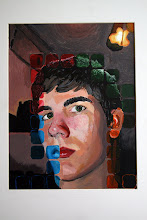Given what you’ve read, what seems to you most important — in general — to keep in mind while arranging type on a page or screen?
Given What I have read VISUAL HIERARCHY is the most important thing to keep in mind when arranging type on a page.
Given what you read, what are the 4-5 specific guidelines or suggestions that you will most try to apply as you work with type on page or screen?
Given what I have read the 4-5 specific guidelines or suggestions that I will most try to follow and apply as I work with type on a page or screen, all of which help visual hierarchy. You must always keep in mind size, weight, color, leading, interline spacing and thats just some of the basic things to keep in mind. If you have an image on your page, size and location of that also determines the visual hierarchy.
Was there anything in the readings that surprised you? Anything that you think should have been in the readings but wasn’t?
I think everything and anything that should have been in the readings was. I had a good understanding of the term visual hierarchy to begin with, but this helped me build up a stronger sense of it.
Wednesday, October 21, 2009
Tuesday, October 13, 2009
Form revision
When viewing my design for the application and comparing it to the links we read on form design I notice great similarity. The main keys in the readings were to have contrast, balance, proportion, rhythm, harmony, movement and unity. I added contrast to make the form a little more interesting, what I did was add boxes with a drop shadow to create a 3D effect. It also breaks up the space more to guide the eye. I believe my application is pretty balanced as well. There are areas that are more on the lighter side and other portions that have a little more weight to them. Proportion is handled efficiently as well I believe, all of the type is a pretty standard font size of 10,12 and 14. Rhythm is achieved by keeping the same attributes on every page, the same type faces were used and the elements of lines and boxes and that also ties harmony into the pieces as well. When you efficiently group elements and keep a nice flow going in my opinion it almost makes rhythm and harmony one. Movement works pretty well I would say, it reads as any typical application would and it is pretty conservative. I didn't play with great scale, because some might be offended by it and not find the same beauty in it that I would. I'm not sure how I feel about it. I like it, but I would have liked to stress the boundaries a little more and play more with cropping and clipping around the edges.
Monday, October 12, 2009
Reading about type response.
After I read all of the websites and a few of them are quite interesting, especially the lawyer one! When analyzing the questions given to answer I thought of quite an interesting response. What seems to be the most important thing to keep in mind when arranging type on a page or screen is actually something non-type related. Audience and or client. Before you even get to designing a page or layout you need to think about who is going to end up reading your document. Whether you design something playful, professional, contemporary, or something a little more laid back and friendly. These are all key things you must think about, much before you even touch that mouse for the first time!
Given what you’ve read, what seems to you most important — in general — to keep in mind while arranging type on a page or screen?
Given what you read, what are the 4-5 specific guidelines or suggestions that you will most try to apply as you work with type on page or screen?
Was there anything in the readings that surprised you? Anything that you think should have been in the readings but wasn’t?
Given what you’ve read, what seems to you most important — in general — to keep in mind while arranging type on a page or screen?
Given what you read, what are the 4-5 specific guidelines or suggestions that you will most try to apply as you work with type on page or screen?
Was there anything in the readings that surprised you? Anything that you think should have been in the readings but wasn’t?
Subscribe to:
Posts (Atom)
